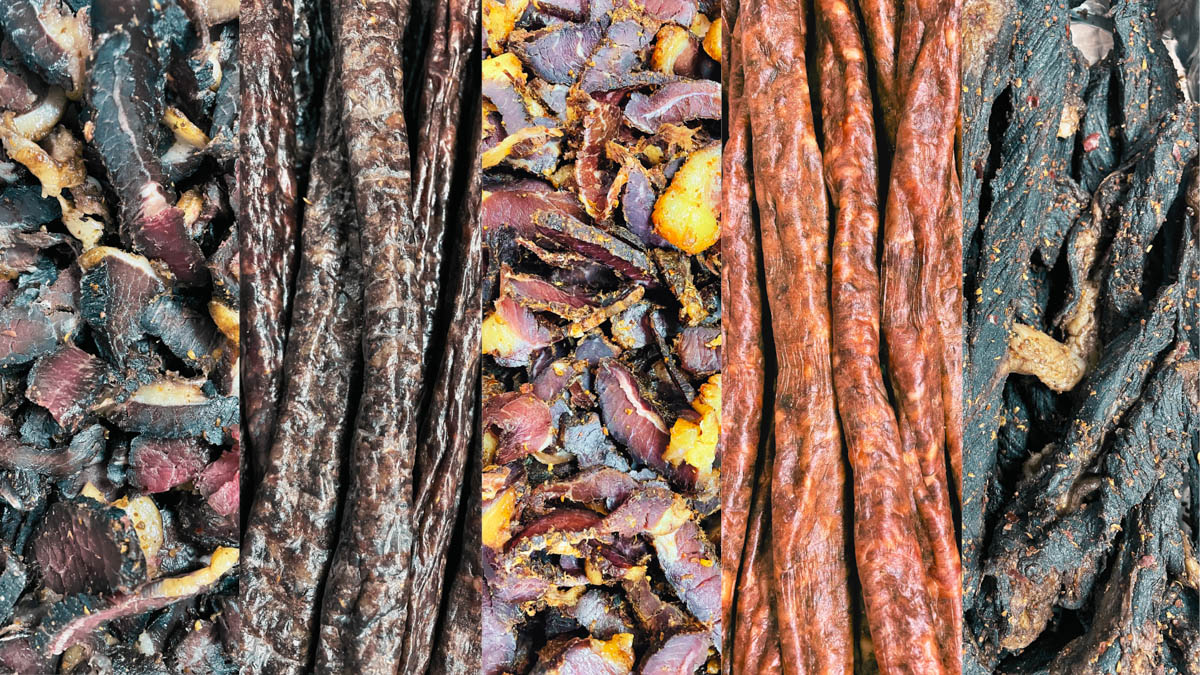The Ultimate Guide To Biltong Making – From Tradition To Innovation
At Kalahari Khabu, we don’t just make biltong; we live, breathe, eat, and sleep it. We’re on a mission to bring the world’s best biltong to meat lovers across the globe. Our roots run deep in the meat industry, stemming from the small town of Adelaide in the Eastern Cape, where our family has been crafting biltong for generations. With over 80 years of collective experience, we understand every nuance of this beautiful, age-old craft.
Biltong began with the Khoisan Bushmen, the first masters of meat preservation, long before refrigerators or modern technology. They relied on the hot, dry African climate to sun-dry strips of game meat, ensuring they had a lasting food source.
Later, the Boer Afrikaners, comprising Dutch, German, and French settlers, perfected the curing process by introducing vinegar and spices and evolving biltong into the delicacy we know today. Even the British settlers couldn’t resist its charm, and biltong quickly became a staple in every South African home.
Today, the world has embraced biltong, but making it successfully depends on the environment. Different methods have emerged over time to counteract humidity and ensure consistent results. Here’s a breakdown of how biltong is made around the world and why different conditions call for different techniques.
Traditional Winter Drying On The Stoep
Early 20th Century Wooden Biltong Box With Fans
The DIY Cardboard Biltong Box Setup
Plastic Biltong Box With A Fan And Heat Source
Budget-Friendly Plastic Biltong Makers
The KK Biltong Boss Range
Enter the modern era with our KK Biltong Boss range, a collection of beautifully designed biltong chambers catering to beginners and professionals. These sleek, programmable, and hygienic biltong dryers feature a closed drying environment that prevents contamination and ensures consistent results. With gentle, controlled airflow, they make it incredibly easy to succeed in producing perfect biltong.
Our range includes:
KK11 Biltong Box
KK12 Biltong Maker
KK16 Biltong Machine
The Kalahari Khabu Heritage Stainless Steel Biltong Box
Kalahari Khabu Commercial Biltong Machine
Kalahari Khabu Industrial Biltong Machine
The Future Of Biltong – Your Journey, Your Method
No matter where you are, Kalahari Khabu has a biltong maker for you. Whether you prefer a traditional method, a simple DIY biltong box, or a high-tech biltong machine, there’s no wrong way; just your way.
The capacities listed above are achievable with experience. Efficient slicing maximises yield; aim initially for 70% capacity, and you’re doing well. Biltong-making should be fun and rewarding! It’s a process of perfecting a craft that has stood the test of time.
Let’s share this beautiful tradition with the world. Happy drying, and welcome to the biltong revolution!


